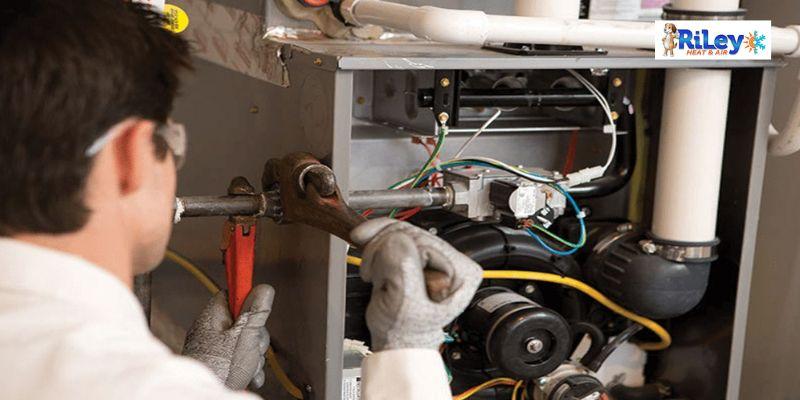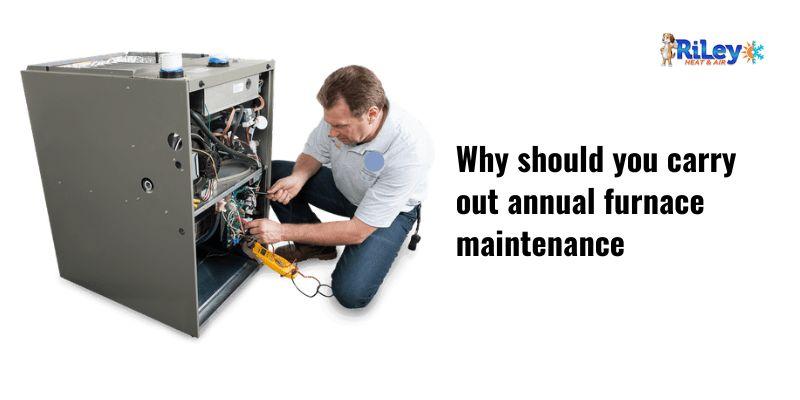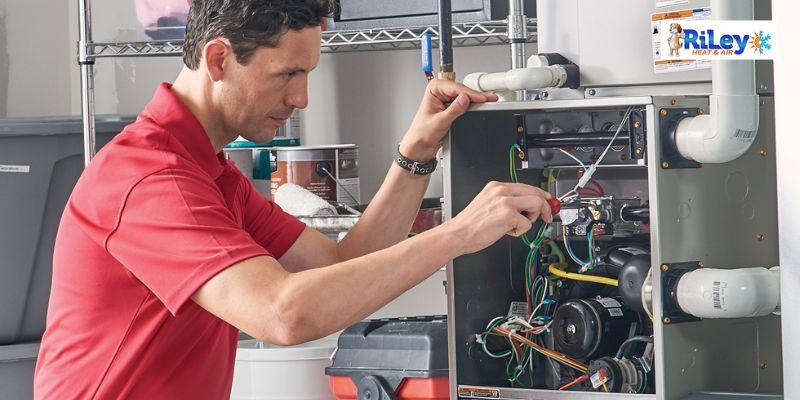
Furnace maintenance checklist for reliability, peak performance, and peace of mind
During the cold winter season, your furnace can help you shake off the cold, which is why it must always be in its best condition. Furnaces only require simple maintenance to keep you comfortable and ensure safety throughout the chilly season. However, most homeowners run their HVAC systems from season to season without carrying out proper care that can prevent problems or breakdowns.
To have a round of rest, your furnace must consistently perform at its peak through consistent maintenance. Knowing your furnace issues and getting an immediate solution is a preventive service you must practice as a homeowner. Here is a checklist for maintaining a furnace system that can ensure your furnace's smooth operation and peace of mind.
Why should you carry out annual furnace maintenance?

Most people have used their furnaces for too long without proper maintenance. Some need to learn that they have to implement annual inspections to maintain an HVAC system. You should take HVAC maintenance seriously because if it is kept clean and well-tuned, your heating and cooling system will last longer and save you money on repairs in the long run. Furnace manufacturers suggest annual inspection and maintenance by a trustworthy HVAC technician.
Here is why you need an annual furnace inspection:
1. To check the efficiency furnace filters
Furnaces with proper maintenance will most likely stay out of trouble. During an annual inspection, your furnace contractor can help you change the air filters. If your furnace is getting old, the technician could change it as regularly as every three months or more, depending on the furnace's condition. If your air filter clogs, it can stop airflow, allow dust, pollen, and many other contaminants that can affect the air quality in your home, and put unnecessary stress on the furnace.
It would be best if you change your air filters for the following reasons:
- To prolong the lifespan of your furnace system.
- To reduce heating and cooling bills.
- To improve the air quality of your home.
- To assist you in avoiding short cycling and furnace overheating.
- To maintain proper temperature regulatons.
2. To carry out less expensive repairs

Furnace inspection and maintenance do not cost much, but homeowners still ignore the alarming signs of a failing furnace until it gets out of hand. Depending on your HVAC needs, furnace servicing can cost up to $100 or $200, which is better than spending so much more on repairs and replacement of damaged components.
3. To identify early signs of furnace replacement
When your furnace lacks proper maintenance or is getting too old, it can suddenly break down. An annual HVAC inspection helps you identify these problems.
Some signs that you should watch out for include the following:
- Increased noise in the HVAC
- High energy bills
- Uneven temperature
Some DIY maintenance checklist for furnace systems
1. Inspect, adjust, and clean furnace burners
Inspecting your furnace's burner is an easy task you can complete without hiring an HVAC specialist. However, the quality of your heating energy increases or decreases at the furnace burners. Therefore, during DIY work, look out for the buildup of corrosion or rust on the burners. Rusted burners can be caused by gas leaks that were not detected early.
2. Inspect your insulation
A proper inspection of your insulation can boost your furnace's performance. Once your insulation is sufficient, it helps keep you warm during chilly days. Conversely, inadequate insulation causes the system to overheat, as it will work too hard to keep you warm in the winter. Adding insulation to walls, attics, and crawl spaces helps improve the furnace and save money. Also, adequate insulation can save you from increased heating and cooling bills.
3. Allow sunlight to enter your home
Allowing natural sunlight to streak in rather than stressing the furnace is one way to keep it running during the winter. You can uncover the shades and draperies facing your south windows throughout the day. This allows natural sunlight to shine into your home. However, ensure you close the windows when night begins to fall, as it can get chilly at that time.
4. Keep records of your furnace inspection
During the inspection and maintenance of your furnace, ensure that you keep records of everything you observe for later assessment by your technician. Aside from this, when installing a new HVAC system, it is essential to record the model codes of the products. Get a file that you can access later and write them out. Keeping records of your furnace's service can help you identify issues. In addition, it delivers proper tracking of your furnace's efficiency.
5. Inspect the pilot lights or electric ignition
When your electric ignition goes terribly, it decreases the furnace's heating efficiency. Likewise, flickering pilot lights might indicate excessive gas leakage (carbon monoxide) in your furnace.
6. Turn off all exhaust fans
Leaving your bath, kitchen, and other energy-consuming fans on can be bad for the furnace. Please make sure you turn them off after bathing or cooking. Also, when re-installing exhaust fans in your home, make sure you opt for models with lower noise and higher efficiency.
7. Listen to your furnace sound
If you hear strange sounds like high-pitched shrills coming from your furnace, it could be due to exhaustion in your blower belt. But loud squeals can be a signal that your furnace has mechanical issues. You can also listen to popping, banging, screeching, and rattling noises.
8. Pay attention to the smell of your furnace
When in your furnace room, sniff around to detect unusual odors like rotten eggs, which can indicate poisonous gas leaks. If the smell is grimy or musty, it can signify oil leakage. A metallic or iron smell can result from a failing furnace motor.
Conclusion
Furnace service and maintenance help improve your furnace's efficiency. While you can make it a DIY task, hiring an HVAC specialist for a professional maintenance plan and tune-up is much more critical. Your HVAC technician can identify potential furnace issues and fix them to keep the equipment running at peak performance.
COMMENTS
LEAVE A COMMENT







I found the Furnace Maintenance Checklist for reliability, peak performance, and peace of mind incredibly useful. The post provided a comprehensive guide to furnace maintenance that was easy to follow and understand. The checklist covered everything from inspecting the air filters to checking the thermostat, ensuring I could identify any issues before they became more extensive problems. Thank you for providing such valuable information on your blog.